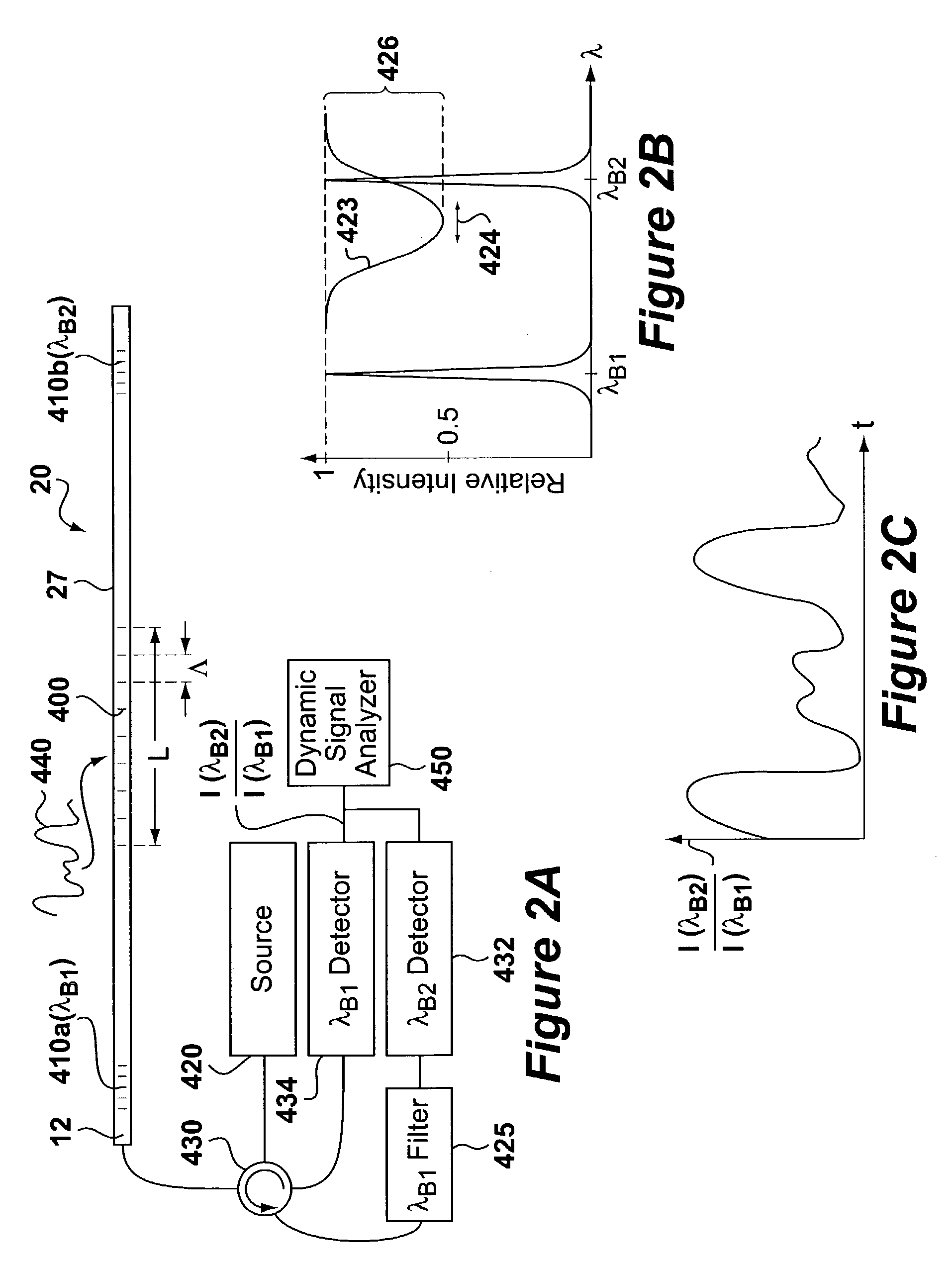Optical sensor using a long period grating suitable for dynamic interrogation
a technology of optical sensors and gratings, applied in the field of optical sensors, can solve the problems of difficult to determine which reflections pertain to which meter or sensor, difficulty in continuously monitoring bragg wavelength shifts, and inability to use high frequency rate pulse sampling in a practical application, etc., to achieve accurate representation of dynamic events.
- Summary
- Abstract
- Description
- Claims
- Application Information
AI Technical Summary
Benefits of technology
Problems solved by technology
Method used
Image
Examples
Embodiment Construction
[0014]In FIG. 2A, the parameter-measuring FBG 10 of FIG. 1 has been replaced by a long period grating (LPG) 400 along the optical waveguide 12. The dynamic event 440 being sensed effects the LPG 400, which acts as the sensitive element as will be explained below. While capable of detecting different types of dynamic events 440, such as temperature variations, this disclosure assumes for simplicity that the dynamic event 440 constitutes a dynamic pressure, such as a seismic pressure wave, which is the application for which the improved sensor and interrogation technique was primarily designed. The spacing Λ of the index of refraction modulation in an LPG 400 is greater than normally used in a narrow band Bragg reflector, ranging on an order of over 25 microns, e.g., about 100 microns, and stretching over a length L of approximately 2 cm. The LPG 400 provides coupling of light propagating in the waveguide to forward propagating cladding modes which are eventually lost due to absorptio...
PUM
 Login to View More
Login to View More Abstract
Description
Claims
Application Information
 Login to View More
Login to View More - R&D
- Intellectual Property
- Life Sciences
- Materials
- Tech Scout
- Unparalleled Data Quality
- Higher Quality Content
- 60% Fewer Hallucinations
Browse by: Latest US Patents, China's latest patents, Technical Efficacy Thesaurus, Application Domain, Technology Topic, Popular Technical Reports.
© 2025 PatSnap. All rights reserved.Legal|Privacy policy|Modern Slavery Act Transparency Statement|Sitemap|About US| Contact US: help@patsnap.com



